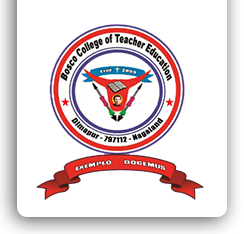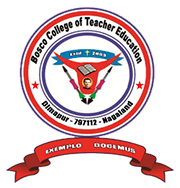Self Study Report (SSR)
Self Study Report (SSR)
Details
- NAAC
- Self Study Report (SSR)
Self Study Report (SSR)
E.P. 1.1. Number of students on roll year-wise during the last five years
E.P. 1.2. Number of seats sanctioned year wise during the last five years
E.P. 1.3 . Number of seats earmarked for reserved category as per GOI/ State Govt. rule year wise during the last five years
E.P. 1.4 . Number of outgoing/ final year students who appeared for final examination year wise during the last five years.
E.P. 1.5 . Number of graduating students year-wise during last five years.
E.P. 1.6 . Number of students enrolled(admitted) year-wise during the last five years.
E.P. 2.1 . Number of full time teachers year wise during the last five years.
E.P. 2.2 . Number of Sanctioned posts year wise during the last five years.
E.P. 3.1 . Total expenditure excluding salary year wise during the last five years (INR in lakhs).
E.P. 3.2 . Number of Computers in the institution for academic purposes.
1.1 Curriculum Design and Development
- 1.1.1 Regular in-house practice of planning and/or reviewing, revising curriculum
- 1.1.2 Curriculum Planning Process
- 1.1.3 Communication of PLOs and CLOs to teachers and students
1.2 Academic Flexibility
- 1.2.1 Optional/ Elective Courses
- 1.2.2 Value-Added Courses
- 1.2.3 Students Enrollment in Value Added Courses
- 1.2.4 Self-Study Courses
- 1.2.5 Students Completed Self-Study Courses
1.3 Curriculum Enrichment
- 1.3.1 Opportunities provided by curriculum to acquire and demonstrate knowledge, skills, values and attitudes
- 1.3.2 Diversities in School System
- 1.3.3 Curricular Experiences provided during the Teacher Education Programme
1.4 Feedback System
- 1.4.1 Structured Feedback on the Curriculum
- 1.4.2 Feedback Analysis and Action Taken
2.1 Student Enrollment and Profile
- 2.1.1 Students enrolled during the last five years
- 2.1.2 Students enrolled from the reserved categories
- 2.1.3 Students enrolled from EWS and Divyangjan categories
2.2 Honoring Student Diversity
- 2.2.1 Assessment process at entry level to identify different learning needs of students
- 2.2.2 Mechanisms to honour student diversities in terms of learning needs
- 2.2.3 Provisions for catering to differential student needs
- 2.2.4 Student-Mentor ratio
2.3 Teaching- Learning Process
- 2.3.1 Multiple mode approach adopted by teachers
- 2.3.2 Teachers integrating ICT for effective teaching
- 2.3.3 Students using ICT support for their learning
- 2.3.4 ICT support is used by students in various learning situations
- 2.3.5 Continual mentoring is provided by teachers for developing professional attributes in students
- 2.3.6 Exposure provided to students about recent developments in education
- 2.3.7 Teaching learning process nurtures creativity, innovativeness, intellectual and thinking skills, empathy, life skills etc. among students
2.4 Competency and Skill Development
- 2.4.1 Opportunities provided by the Institution for developing competencies and skills in different functional areas
- 2.4.2 Preparatory to school- based practice teaching and internship
- 2.4.3 Activities for developing effective communication in students
- 2.4.4 Students enabled to evolve tools of assessment for learning
- 2.4.5 Skills developed in students for effective use of teaching and learning
- 2.4.6 Students develop competence to organize events
- 2.4.7 Assignments given and assessed for theory courses
- 2.4.8 Planning of Internship programme
- 2.4.9 Average number of students attached to each school for internship
- 2.4.10 Nature of internee engagement during internship
- 2.4.11 Monitoring mechanisms during internship
- 2.4.12 Performance of students during internship
- 2.4.13 Comprehensive appraisal of interns’ performance
2.5 Teacher Profile and Quality
- 2.5.1Percentage of fulltime teachers against sanctioned posts
- 2.5.2 Percentage of fulltime teachers with Ph. D. degree
- 2.5.3 Average teaching experience of full time teachers
- 2.5.4 Efforts taken by the teachers to keep themselves updated professionally
2.6 Evaluation Process
- 2.6.1 Continuous Internal Evaluation (CIE) of student learning
- 2.6.2 Mechanism of internal evaluation
- 2.6.3 Mechanism for grievance redressal related to examination
- 2.6.4 Mechanism of adhering to academic calendar for the conduct of Internal Evaluation
2.7 Student Performance and Learning Outcomes
- 2.7.1 Alignment of stated PLOs and CLOs with the teaching learning process
- 2.7.2 Average pass percentage of students during the last five years
- 2.7.3 Performance of students and attainment of professional and personal attributes
- 2.7.4 Performance of outgoing students in internal assessment
- 2.7.5 Assessment task and the performance of students reflect their initially identified learning needs
2.8 Students’ Satisfaction Survey
- 2.8.1 Online students’ satisfaction survey regarding Teaching – Learning Process
3.1 Resource Mobilisation for Research
- 3.1.1 Funded Research Projects
- 3.1.2 Grants Received for Research Projects
- 3.1.3 In-house support provided by the institution for research
- 3.1.4 Eco-system and other initiatives for creation and transfer of knowledge
3.2 Research Publications
- 3.2.1 Research papers / articles published in Journals
- 3.2.2 Books / chapters in edited books published and papers in National / International conference-proceeding
3.3 Outreach Activities
- 3.3.1 Outreach Activities organized by the Institution
- 3.3.2 Students participating in outreach activities
- 3.3.3 Student participation in national priority programmes
- 3.3.4 Outreach activities conducted sensitized to social issues and community development
- 3.3.5 Awards and Honours received for outreach activities
3.4 Collaboration and Linkages
- 3.4.1 Linkages for faculty exchange, student exchange & research
- 3.4.2 MoUs
- 3.4.3 Linkages with schools and other educational agencies for both academic and outreach activities
4.1 Physical Facilities
- 4.1.1 Adequate Facilities for Teaching –Learning
- 4.1.2 ICT- enabled facilities
- 4.1.3 Expenditure for infrastructure augmentation excluding salary
4.2 Library as a learning Resource
- 4.2.1 Library Automation
- 4.2.2 Remote access to library resource
- 4.2.3 Subscription/membership to e-resources
- 4.2.4 Annual expenditure for purchase of books, journals and e-resources
- 4.2.5 Usage of library by teachers and students
- 4.2.6 Availability of National Policies and other documents on education in the library
- 4.3 ICT Infrastructure
- 4.3.1 Nature of Updation on ICT facilities including Wi-Fi
- 4.3.2 Student – Computer ratio
- 4.3.3 Available bandwidth of internet connection in the institution
- 4.3.4 Availability of Facilities for e-content development in the institution
- 4.4 Maintenance of Campus Infrastructure
- 4.4.1 Expenditure incurred exclusively on maintenance of physical and academic support facilities
- 4.4.2 Systems and procedures for maintaining and utilizing physical, academic and support facilities
5.1 Student Support
- 5.1.1 Capability building and skill enhancement initiatives are undertaken by the institution
- 5.1.2 Available student support facilities in institution
- 5.1.3 Transparent mechanism for timely redressal of student grievances
- 5.1.4 Additional support provides to needy students
5.2 Student Progression
- 5.2.1 Placement of students as teachers/teacher educators
- 5.2.2 Student progression to Higher Education
- 5.2.3 Students qualifying in state/ national level examinations
5.3 Student Participation in Activities
- 5.3.1 Role of Student council in the institutional functioning
- 5.3.2 Average number of sports and cultural events organized at the institution during the last five years
5.4 Alumni Engagement
- 5.4.1 Alumni Association/Chapter contributes significantly for the development of the institution
- 5.4.2 Active role of Alumni in the regular institutional functioning
- 5.4.3 Number of meetings of Alumni Association held during the last five years
- 5.4.4 Effective support system of Alumni Association
6.1 Institutional Vision and Leadership
- 6.1.1 Governance of the institution
- 6.1.2 Decentralization and Participative management
- 6.1.3 Transparency in financial, academic, administrative and other functions
6.2 Strategy Development and Deployment
- 6.2.1 The institutional Strategic plan
- 6.2.2 Functioning of the institutional bodies
- 6.2.3 Implementation of e-governance
- 6.2.4 Effectiveness of various bodies/cells/committees
6.3 Faculty Empowerment Strategies
- 6.3.1 Welfare measures for teaching and nonteaching staff
- 6.3.2 Teachers provided with financial support
- 6.3.3 Professional development /Administrative training programmes
- 6.3.4 Teachers undergoing online / face to face Faculty Development Programmes
- 6.3.5 Performance appraisal system for teaching and non-teaching staff
6.4 Financial Management and Resource Mobilization
- 6.4.1 Internal or/and External financial Audit
- 6.4.2 Funds / Donations received from non-government bodies, individuals, philanthropists
- 6.4.3 Institutional strategies for mobilization of funds and the optimal utilization of resources
6.5 Internal Quality Assurance System
- 6.5.1 Contribution of Internal Quality Assurance Cell (IQAC)
- 6.5.2 Reviewing teaching-learning process through IQAC
- 6.5.3 Quality initiatives taken by IQAC for promoting quality culture
- 6.5.4 Quality Initiatives of the Institution
- 6.5.5 Incremental improvements achieved in academic and administrative domains of its functioning through quality assurance initiatives
7.1 Institutional Values and Social Responsibilities
- 7.1.1 Energy policy streamlining ways of energy conservation, use of alternate sources of energy for meeting its power requirements
- 7.1.2 Policy and procedure for implementation of waste management
- 7.1.3 Waste management practices
- 7.1.4 Water management and conservation initiatives
- 7.1.5 Maintenance of cleanliness, sanitation, green cover and providing a pollution free healthy environment
- 7.1.6 Encourage green practices
- 7.1.7 Expenditure on green initiatives and waste management
- 7.1.8 Institution puts forth efforts leveraging local environment, locational knowledge and resources, community practices and challenges.
- 7.1.9 Code of Conduct for students, teachers, administrators and other staff
7.2 Best Practices
- 7.2.1 Institutional best practices
- 7.3 Institutional Distinctiveness
- 7.3.1 Performance of the institution in one area of distinctiveness related to its vision, priority and thrust

